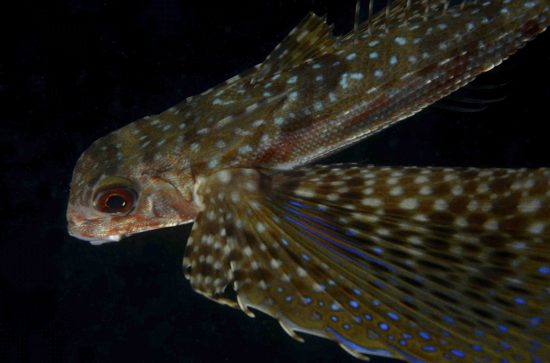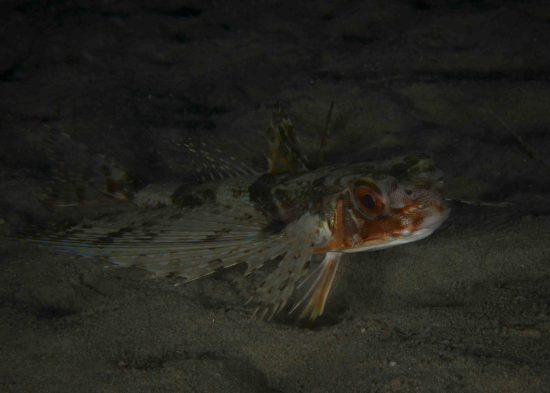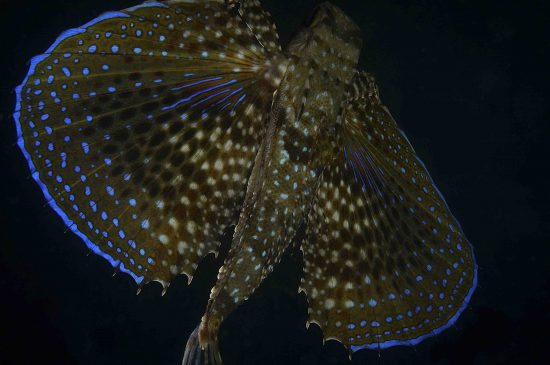






Flying gurnards roam the Atlantic and can be found along the coasts of Canada, the US and the Gulf of New Mexico, from the English Channel to Angola and the Mediterranean.
Their most famous features are their magnificent pectoral (side) fins that can spread the entire length of their bodies like giant wings when they get flustered.
Unfortunately, these "wings" don't enable these fish to leap or fly out of the water, so scientists prefer to call them "helmet gurnards" to avoid false advertisement. These majestic fins are the flying gurnard's main defence mechanism as they use them to appear bigger and scare predators.
Though they are not particularly good at flying, flying gurnards are very confident sea bottom walkers. When their wings are closed, they use their pelvic (bottom) fins to "walk" on the sea floor and the back spines of their "wings" to dig through the sand and hunt small crustaceans, clams and even other fish.
Their unusual name comes from Latin and old French, gurnard, to grunt. Unlike humans, who make sounds using their vocal chords, flying gurnards use their swim bladder and jaw muscles to produce these grunt-like sounds to communicate with each other or scare predators.
Having large wings and being able to make angry sounds makes flying gurnards bold and confident. Consequently, it is no surprise they are often accompanied by a pack of diverse fish, like the yellow jack and coney.
Written by Lena Ilic B.Sc., Marine Biologist
Photos by Nikola Doder
 Ivana and Janez
Ivana and Janez 1st November 2022
1st November 2022